A coulibiac is a Russian Pirog usually made with puff pastry filled with salmon, rice, hard-boiled eggs, mushrooms, onions, and dill. It’s distinguishable by its oval loaf style shape and complex filling stacked in series and separated by thin pancakes to prevent mixing. This recipe makes the perfect dish to impress your guest, it demands time, patience, and enthusiasm but it’s definitely worth it and you’ll end with a heavenly dish.
Origin and history
A coulibiac or koulibiak (from Russian: кулебя́ка – koulébiáka) is a traditional popular holiday dish from Russia. It’s a type of Pirog usually filled with salmon or sturgeon, rice or buckwheat, hard-boiled eggs, mushrooms, onions, and dill. The pie is baked in a pastry shell (puff pastry or brioche) and served in slices. It’s also distinguished by a more elongated, oval, and more convex shape, similar to a loaf.
There’re many versions for the origin of the name. It is widely believed that the name comes from the German Kohlgebäck – “baked (in dough) cabbage”. Another version is based on the relationship with the Finnish Kala – “fish”. One of the versions believes that the kulebyak came from kolobok, that is, small bread. According to another version, the name of the pie kulebyaka comes from the Polish word kula – ball, obviously associating the name with a rounded shape. According to a last version, the term kulebyaka comes from the verb kulebyachit, that is, “play with your hands, dump, crush, bend and fold, cook and mold.” In fact, this verb fully covers all the processes that occur during the preparation of the pie.
The origins of the coulibiac are little known and go back as far as the 12th, 16th, or 17th centuries since different sources differ in determining the date of the first mention of coulibiacs. It was a dish that was destined to all sectors of the population – from peasants and artisans to the boyars and kings. The original Old Russian coulibiacs were prepared exclusively from yeast dough, with several layers of minced meat – from all sorts of meat, cabbage, buckwheat porridge, eggs, dried and boiled fish, mushrooms, onions, etc.
In the 19th century, French culinary specialists (The most famous were Moscow kulebyaks) who worked in Russia contributed to spreading its fame internationally. They adapted their recipe to the requirements of “high-class cooking” by preparing it from the more delicate “French” dough, mushrooms, rice, salmon and etc. At the beginning of the 20th century, the famous French chef and culinary author Auguste Escoffier imported the recipe to France and incorporated it into his culinary works. This recipe, which has since been spread all over the world, has become part of the cuisine of the Eastern European countries and of Israeli cuisine.
Notes and tips
For the dough, the traditional recipe is made from yeast dough, however, it is permissible to use a puff pastry or unleavened dough. The thickness depends on the type of dough: it should not be too thick (so that the dough after baking does not exceed the filling volume). In our recipe, we’ve used puff pastry.
In the traditional recipe, it’s recommended to bake thin fresh crepes or pancakes that will separate the different fillings from each other, without fusing their taste. In our recipe, we decided to omit this step, since it’s more time consuming but feel free to do it if you want.
The traditional stuffing is made with rice, salmon (or sturgeon), hard-boiled eggs, mushrooms, onions, and is flavored with dill. In our recipe, we’ve decided to use use the same ingredients to keep it authentic as much as possible.
The filling should be pre-cooked, semi-cooked, or cooked (depending on the density of the ingredients) and chopped to the state of gruel or paste. This is necessary so that the ingredients of the filling, differing in initial density, are as close as possible in their state and at the same time retain their shape when it is cut into slices.
Finally, a coulibiac demands time, patience, and enthusiasm but it’s definitely worth it and you’ll end with a heavenly dish.
Serving
The coulibiac is a versatile dish and depending on the type of dough and the filling, it can be served as an appetizer, as a main dish, or as an addition to it. It is served cut into slices so that all the fillings are clearly distingueshed at the same time.
If it is prepared as a main, independent dish, then it is served with ghee, sour cream, or another suitable sauce. Otherwise, it can be served with soups or broths, traditionally borscht (beetroots soup).
Variants
- Pirog;
- Kurnik chicken pie;
- Rasstegai;
- Pithivier.

Russian Salmon Coulibiac
Ingredients
- 500 g
Puff pastry - 2 eggs
- 75 g butter
- 125 g basmati rice
- 250 ml fish stock
- 1 tbsp parsley
- 1 bay leaf
- 1 cinnamon stick
- 1 tsp coriander seeds
- 350 g salmon
- 1 tsp lemon zest
- 2 tbsp fresh lemon juice
- 1 onion, medium
- 125 g mushrooms
- 1 tbsp dill
- 1 tsp salt
- 1 tsp black pepper
- 1 beaten egg, for glazing
- 1 tbsp melted butter, for glazing
- Dill, parsley, lemon wedges, for serving
Instructions
- First, get everything prepared.
Preparing the eggs
- Boil a pan of salted water, add the eggs and cook for 8 mins exactly.
- Drain and cool under cold water, then peel and set aside for 10 minutes.
- Cut the hard-boiled eggs into cubes.
Preparing the rice
- Melt 25 g of the butter in a medium saucepan.
- Add the bay leaf, the cinnamon stick, and coriander seeds, then stir in the rice and cook for 2-3 minutes.
- When the rice is coated with butter, add the fish stock, salt, and black pepper and bring it up to a simmering point.
- Cover with a lid and cook for 15 minutes exactly.
- Take the pan off the heat, remove the lid and add 1 tbsp of parsley, then it to cool.
Preparing the salmon
- Lay the salmon on a cutting board and add seasoning: salt, black pepper, and lemon zest.
- Place a skillet over medium heat. Add 25 g of the butter.
- Sizzle the slices of salmon for 1 min on each side, just to firm up the fillets but not cook them all the way through, the salmon needs to be only half cooked.
- Before removing from the heat add 1 tbsp of lemon juice and continue cooking for 1 minute.
Preparing the mushrooms
- Slice the onion and the mushrooms.
- Place a skillet over medium heat. Add 25 g of the butter.
- Add sliced onion and cook for 2-3 minutes.
- Add sliced mushrooms and sauté for 5 minutes to brown the mushrooms.
- Add dill, salt and pepper to taste, then add 1 tbsp of lemon juice.
- Allow the mushrooms to simmer until the lemon juice has completely absorbed and the mushrooms are nearly dry, about 5-10 minutes.
Assembling and cooking
- Preheat the oven to 400°F (200°C).
- Roll out two pieces of pastry to a rectangle of 20x35cm and 16x35cm.
- Then, take the 16x35cm rectangle and lay it on a baking tray.
- Pack the rice along the middle of the pastry, discarding the bay leaf and cinnamon as you do so, leaving a good 2.5cm (1in) border around the edge.
- Lay the salmon over the rice.
- Add the sauteed onion and mushrooms on top of the salmon, pressing and molding it with your hands.
- Add the cubed hard-boiled eggs on top.
- Brush any stray grains of rice off the border, then brush the border with the beaten egg,
- Take the second puff pastry rectangle of 20x35cm and drape it over the coulibiac and use your hands to gently pack everything down to a firm, even loaf shape. Press the edges to seal the 2 pastry sheets together, then trim the edges to neaten and crimp with your fingers or press down with a fork.
- Brush the remaining egg over the tops. At this step, you can decorate with remaining puff pastry. Then, brush on top with 1 tbsp of melted butter. Cut a small vent in the top of the coulibiac.
- Bake for 45-60 minutes until the tops are golden.
Sources: 1. Wikipedia - Koulibiak : www.wikipedia.org.

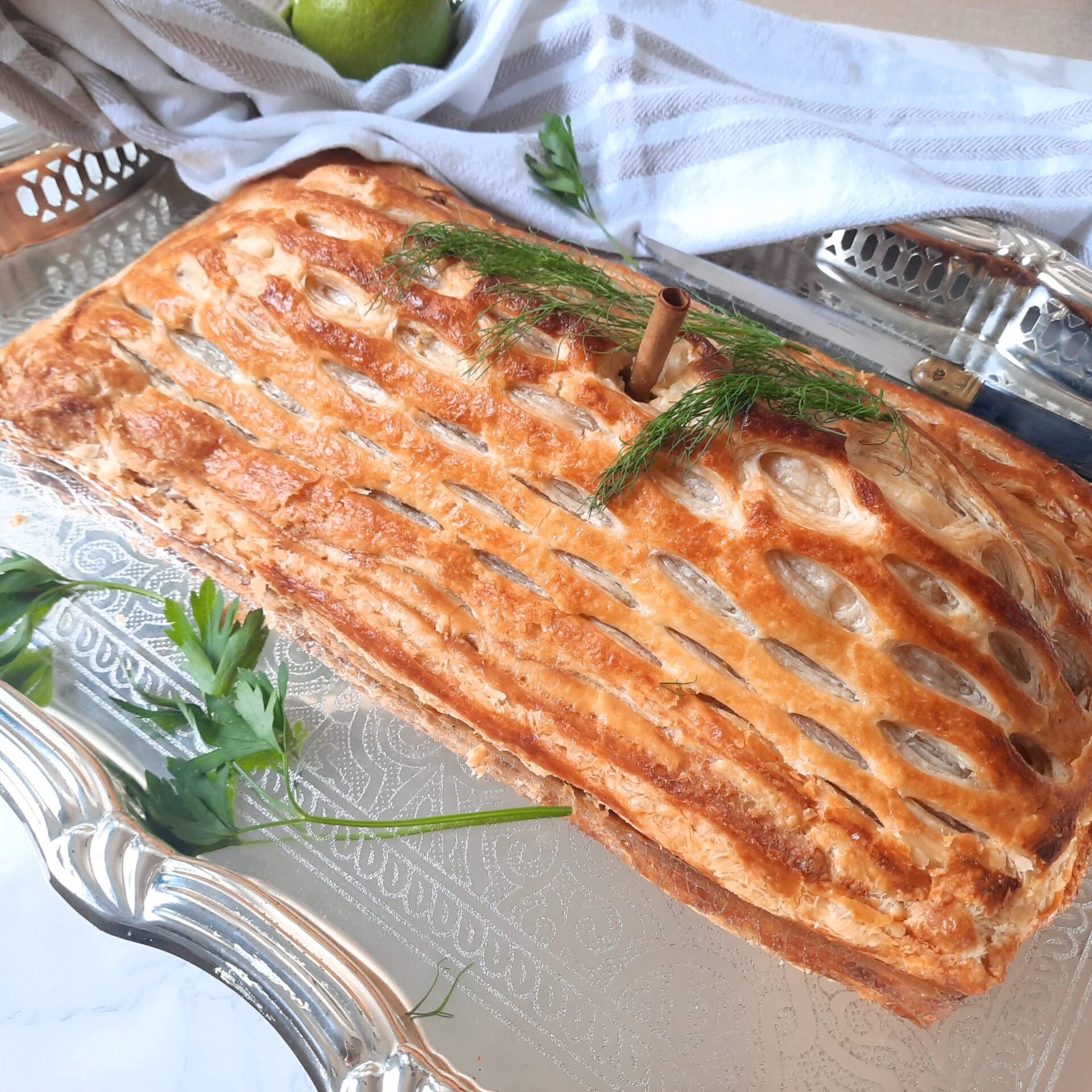
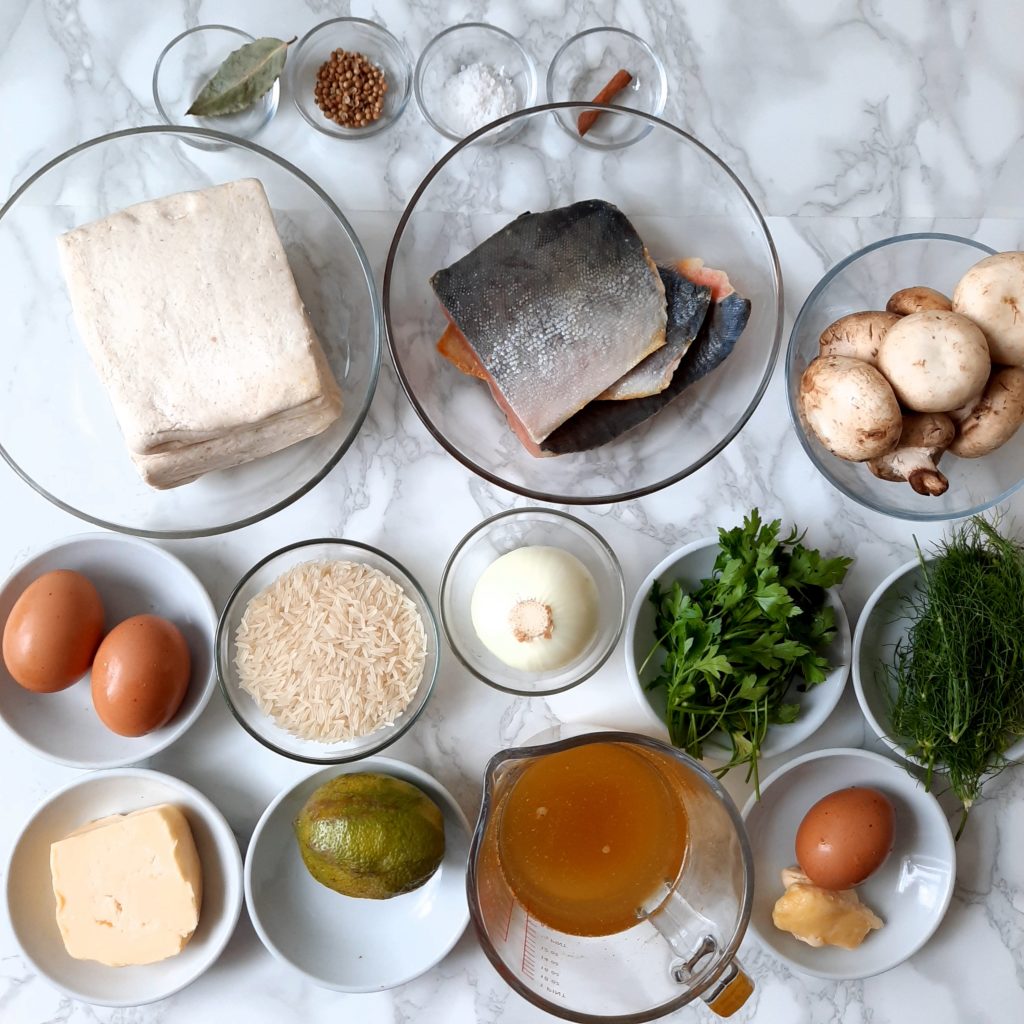

















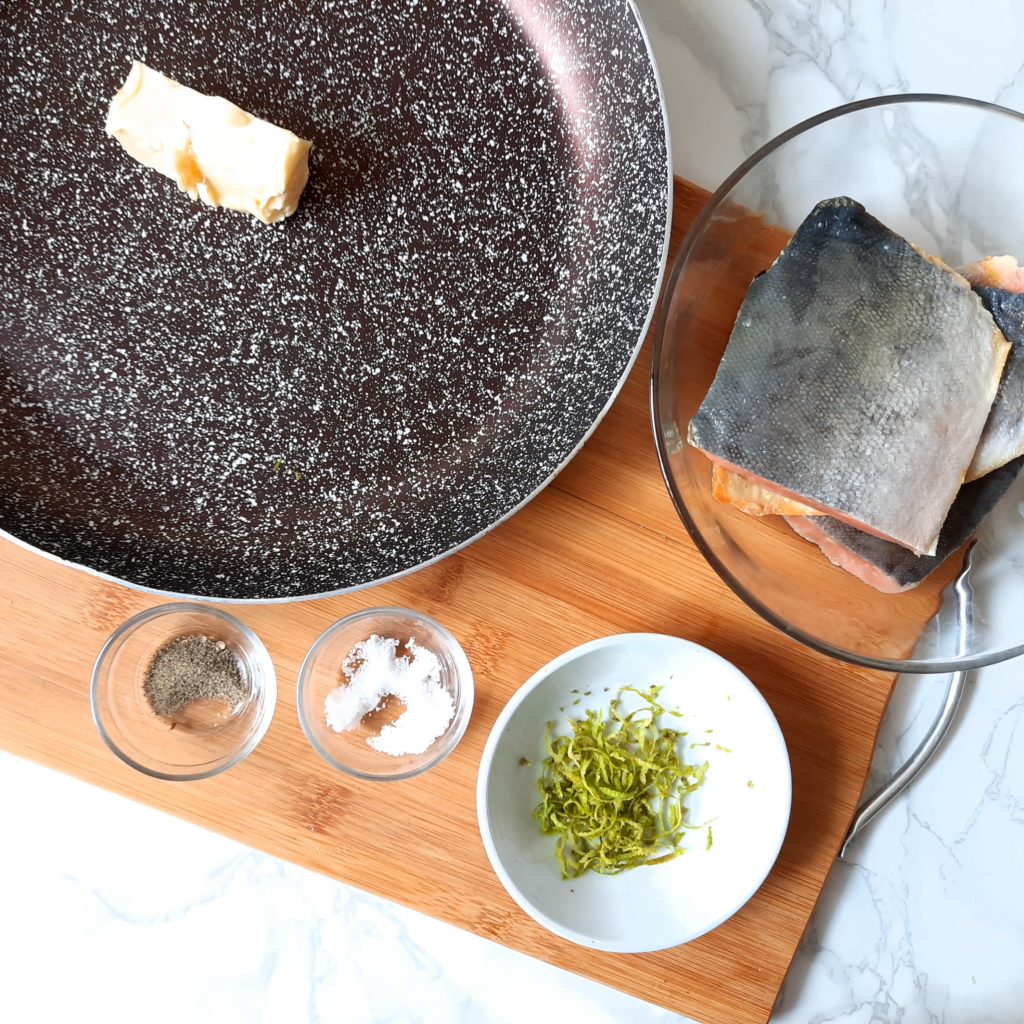






















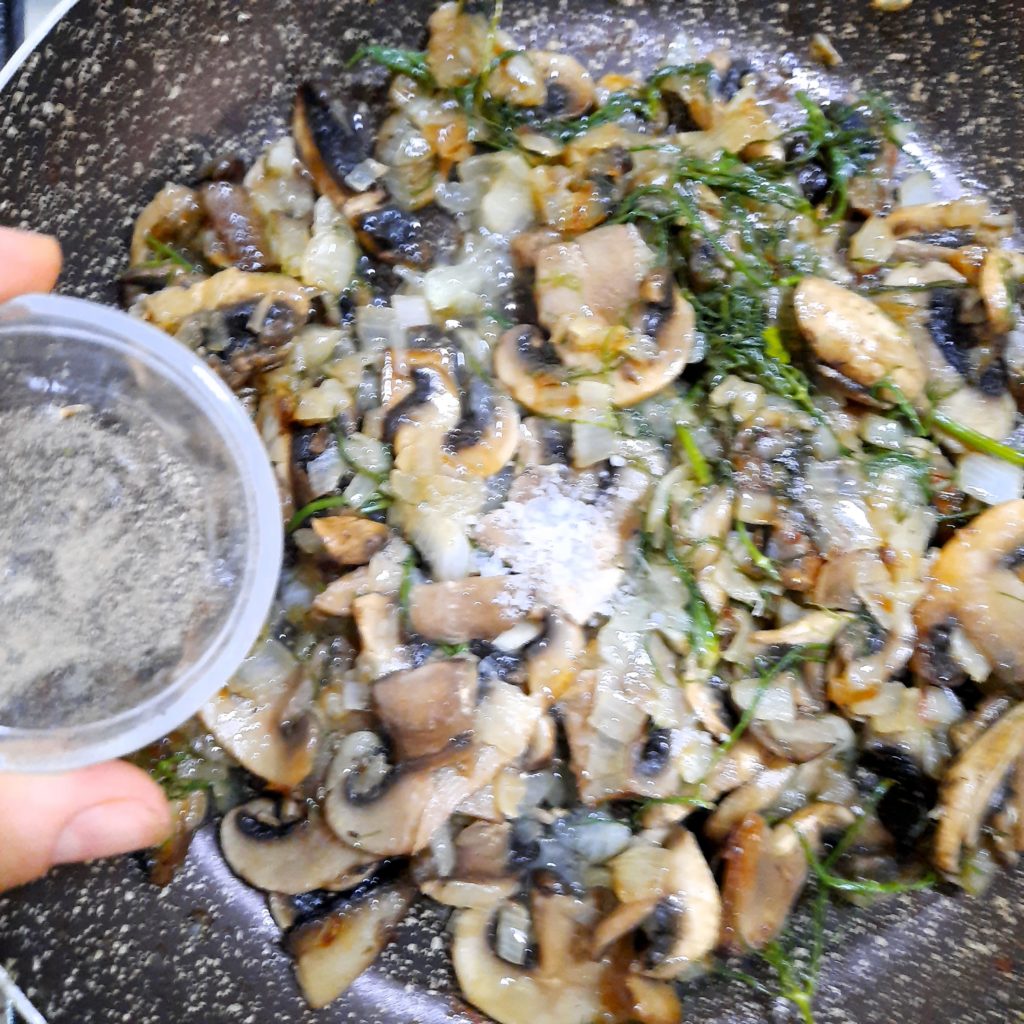






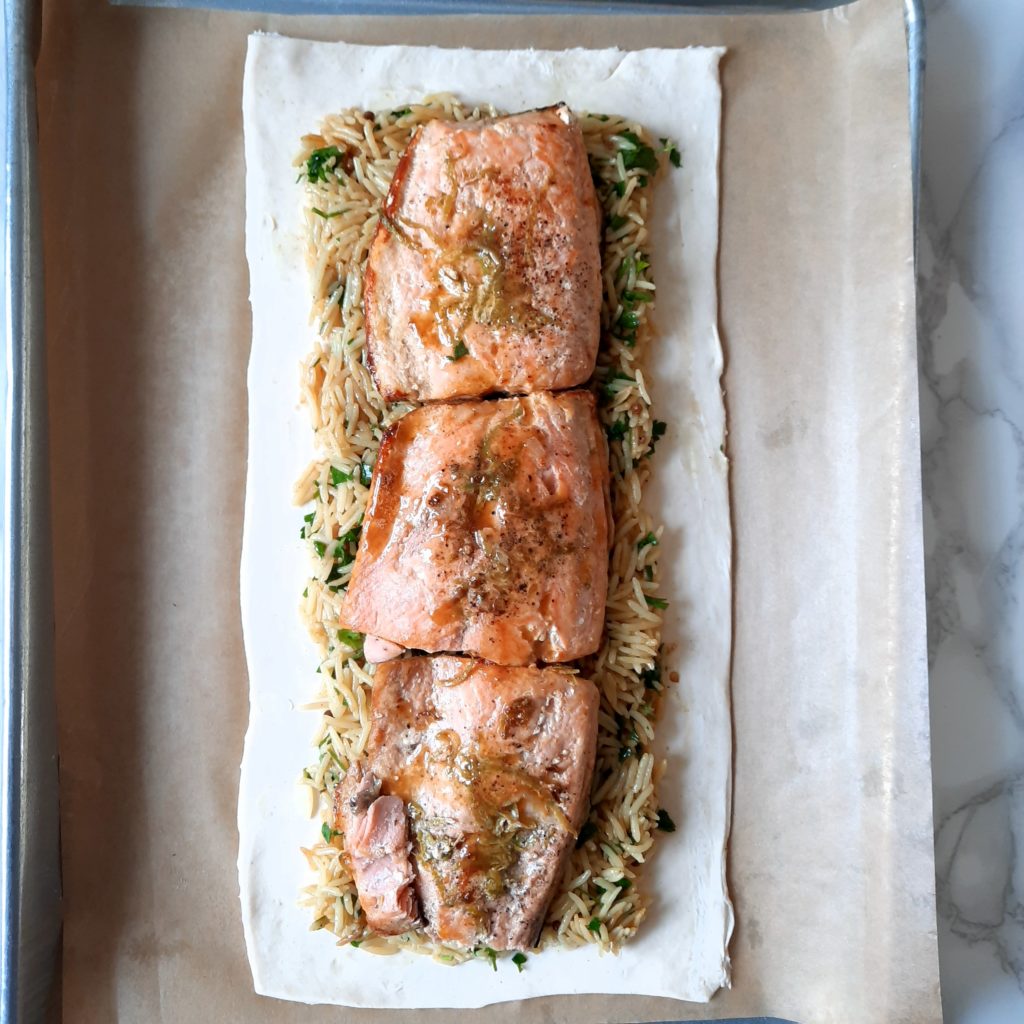






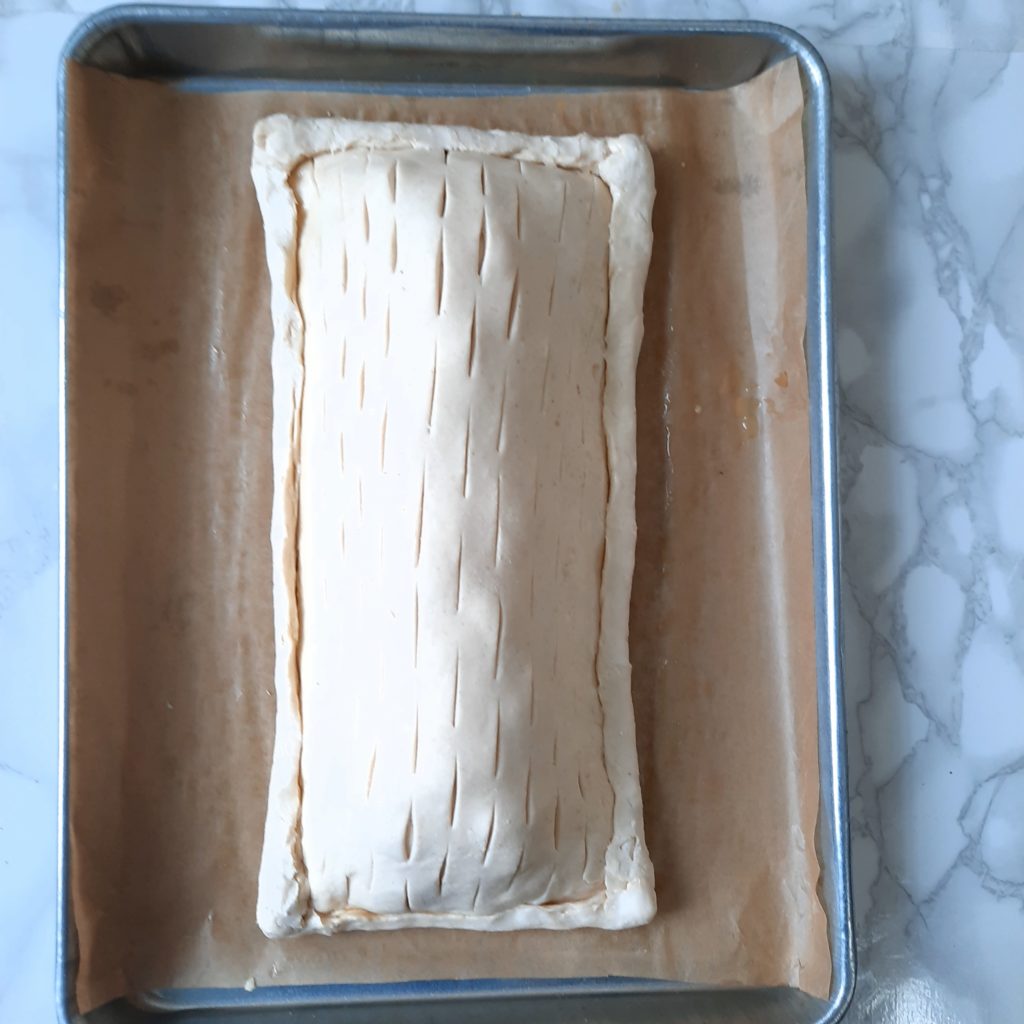







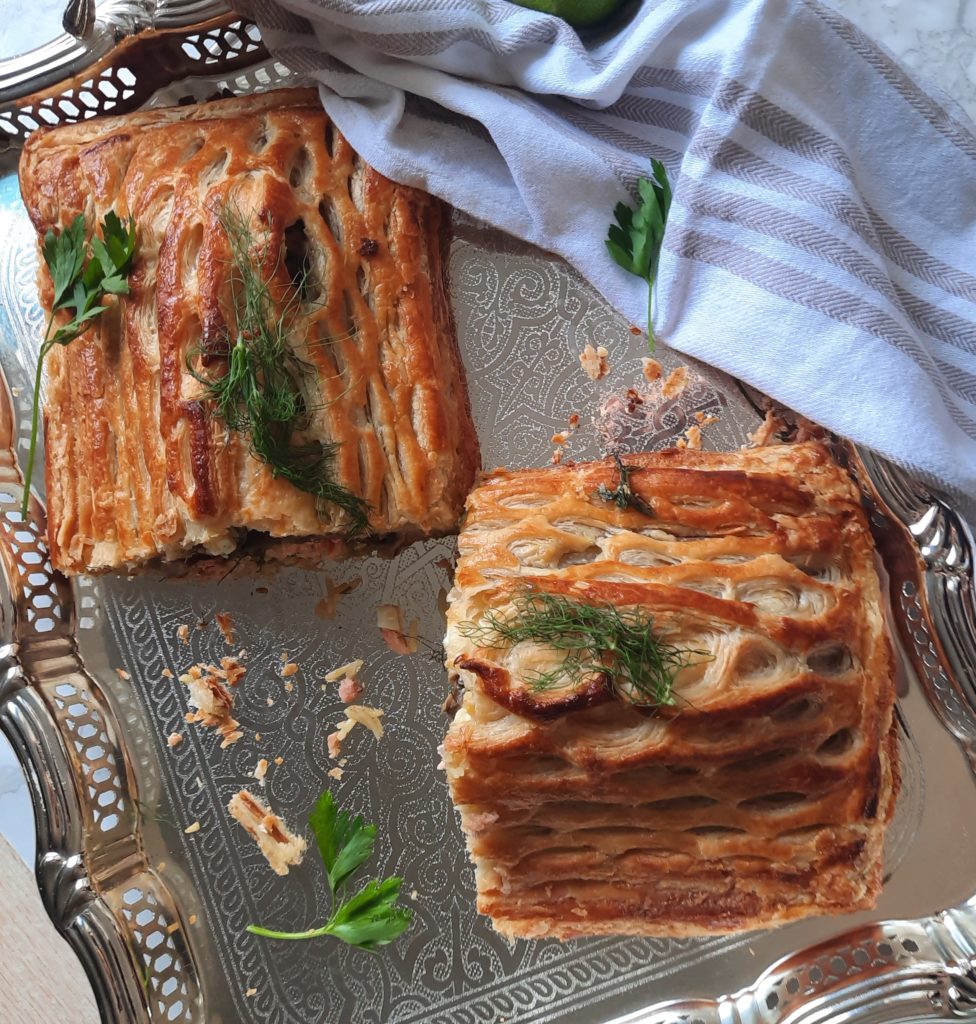



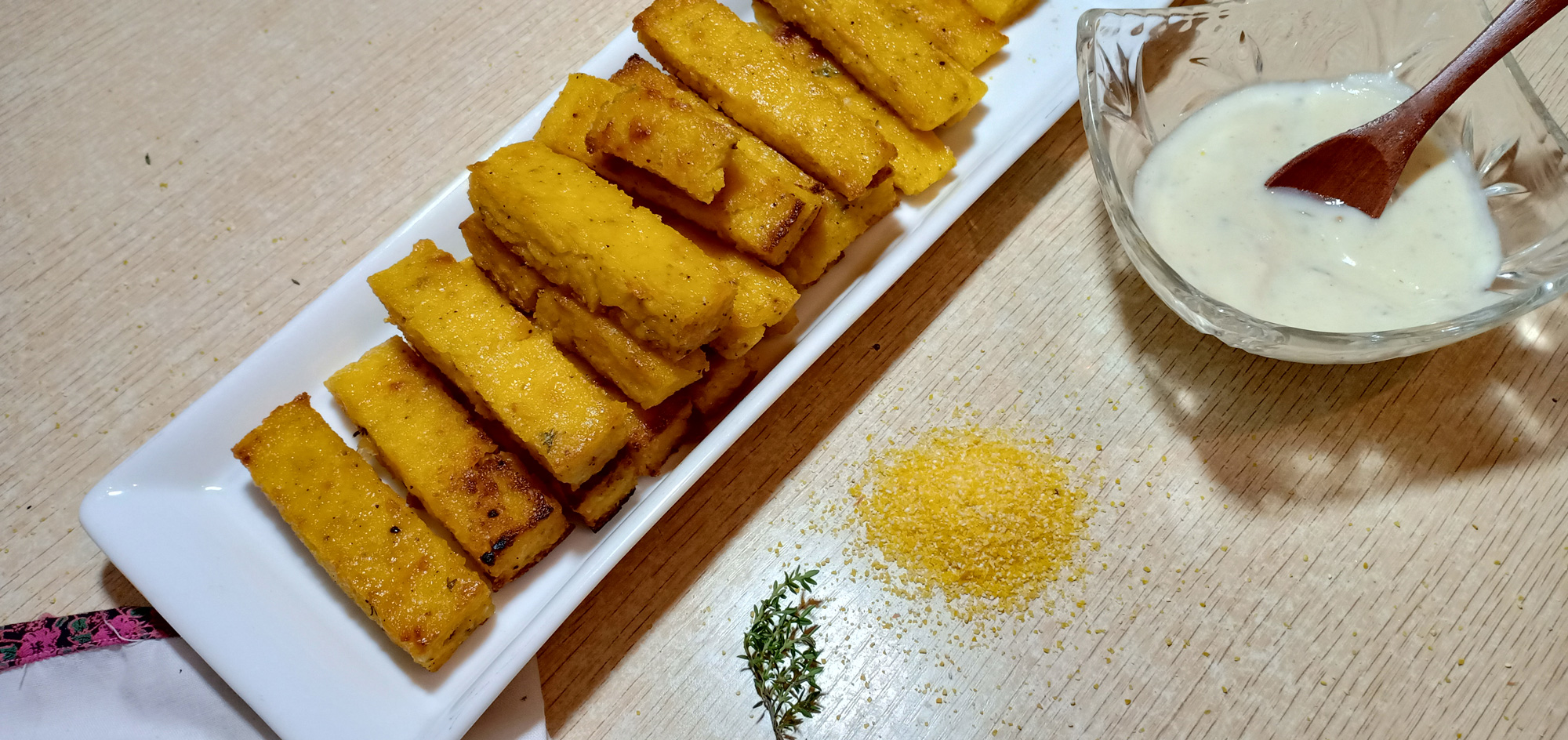

[…] a Russian dish and a type of pirog, a category of Russian cuisine that refers to stuffed pies (via O Yummy). This fish-filled pirog is usually prepared with either salmon or sturgeon, along with buckwheat […]
[…] a Russian dish and a type of pirog, a category of Russian cuisine that refers to stuffed pies (via O Yummy). This fish-filled pirog is usually prepared with either salmon or sturgeon, along with buckwheat […]
[…] Kulibjaka on ollut kauan suosittu juhlaruoka Venäjällä. Näissä resepteissä sitä tehdään usein kalaan – joskus nimen alkuperän on jopa arveltu kytkeytyvän suomen kala-sanaan. […]